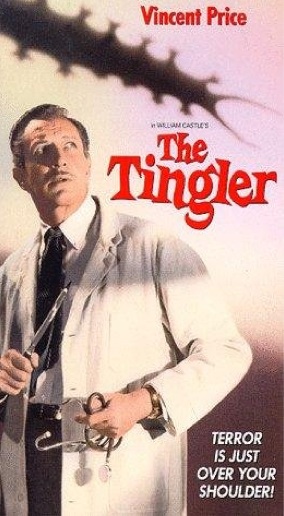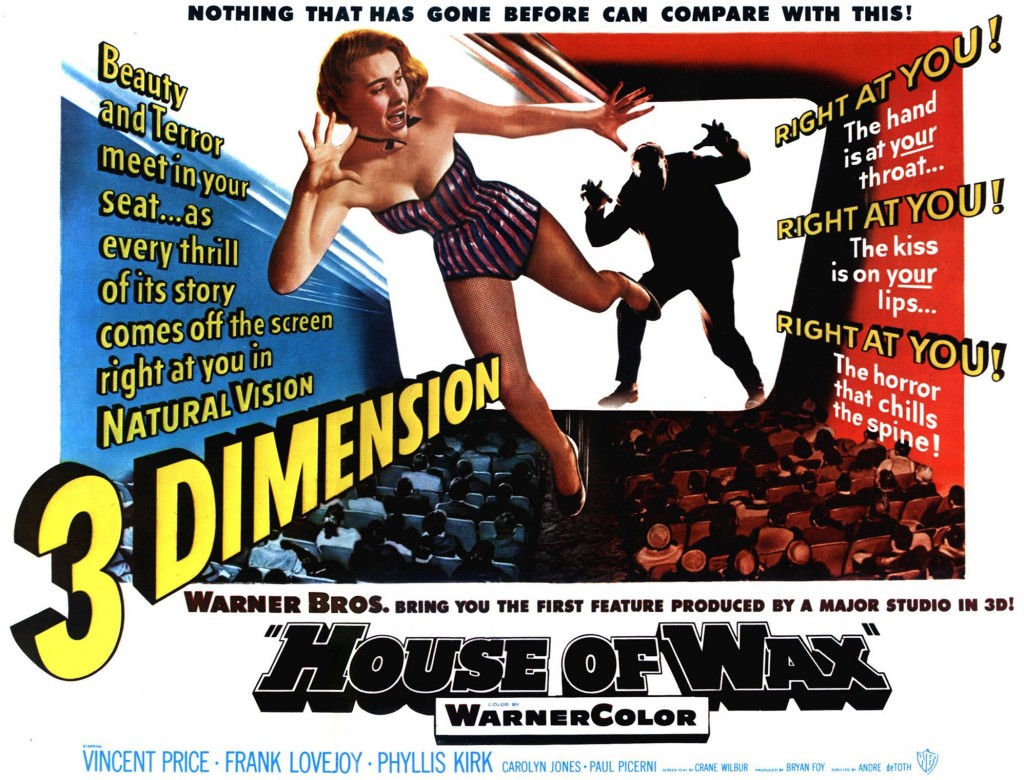A Most Diverting Account of the Movie Gimmick
Journalist, beware. In the realm of moving-image history, the community of expert archivists quickly spots any slip-up.
Take this fascinating article, “Warning! These 1950s Movie Gimmicks Will Shock You,” on the always diverting Collectors Weekly web site.
In generous detail, it explores the myriad publicity stunts that entrepreneurial producers and theater managers of the 1950s built into and around film screenings.
The article is so entertaining that one subscriber to AMIA-L, a listserv for moving-image archivists, earlier this week (19 August 2013) recommended it as particularly diverting.
But hawk-eyed AMIA-L users immediately jumped in to correct the Collectors Weekly’s account of one of the most renowned gimmicks of the era. They noted that the article replicated an oft-repeated but mistaken account of a gimmick that accompanied many screenings of the 1959 horror-thriller The Tingler.We’ll get to that.
In his article, Collectors Weekly’s Hunter Oatman-Stanford describes movie-house attention-grabbers of various strengths and sanity. Some are now common ploys in movie theaters far and wide – surround sound, color (early on, in tinted two-tone splashes), and widescreen projection (in Cinerama, a three-screen system, or in a less-ambitious and –costly format, Cinemascope).
Sure, John Waters, for his 1981 film, Polyester, had scratch-and-sniff cards made that theaters distributed to audience members so they could experience more fully the smells of the on-screen action. But, read Oatman-Stanford’s account, and you’ll learn why Waters was merely continuing a practice dating back to more-spectacular precursors of the late-50s.
But, as Oatman-Stanford relates, falling attendances followed the advent of television and a 1948 Supreme Court ruling that dismantled movie-studios monopolies and took theater chains out of the studios’ hands. To lure audiences back, independent production companies and theaters pulled out the stops. Some of their ruses were straightforward – running contests, marching down main streets with lurid film posters, handing out film-themed coloring books, placing hand-made dioramas in lobbies…
Then there were the wacky innovations in technology and marketing. One was 3D, which is not nearly as novel as current-day hoopla encourages moviegoers to believe. One of the earliest 3D exercises came in 1953’s House of Wax, starring Vincent Price. The plot of André de Toth’s blood-curdler was lurid: A wax-museum worker burns the joint down, whilst the owner is within; the hapless fellow survives, but becomes a vengeful, homicidal ghoul. The movie’s appeal was sufficient to take it to that year’s top-10-receipts list.William Castle, the greatest exponent of 1950s movie gimcrackery, upped the ante with his 1958 chiller, Macabre: He placed hearses and fake nurses outside theaters while putting it about that he had taken out a Lloyd’s of London insurance policy guaranteeing $1,000 in compensation to anyone the movie frightened to death. (How such patrons would then collect, was unclear.)
Soon imaginative public-relations agencies were recommending a plethora of crowd-wooing stunts. Some were quite clever and perhaps could still stoke a film premier or for that matter a protest, peace-in, or pre-Kickstarter-style fundraiser. The “pressbook” for Fred F. Sears’ 1957 shock-horror schlocker The Giant Claw – a bloody great firebird in supersonic descent wreaks havoc all around the town – had this suggestion for theater operators: “With police permission, paint the imprint of a huge claw, in red water color, in the street in front of the theatre and other locations around town.”
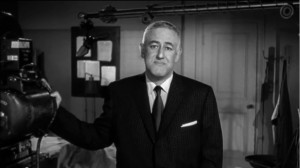
Castle was tireless in devising such gimmicks, explains Oatman-Stanford. In one, he staged “punishment polls” during screenings where audience members could choose between retributive or merciful endings.
But the “crowning achievement of Castle’s gag-filled oeuvre, writes Oatman-Stanford, was his 1959 and now-camp-cult-classic The Tingler. Its plot summary, alone, demonstrates why it would become a high point in cinematic grand guignol: At a state prison, a pathologist (again, Vincent Price) uses the bodies of executed prisoners to explore his theory that a dreadful fear-activated creature resides within human bodies; it would pop out and rip guts and gizzards out, except for the one thing that gives release to fear before it can catalyze the horror – and that is: the short-circuiting of fear in humans when they scream. Undaunted, the mad-scientist pathologist seizes an opportunity to pursue this creature – the “Tingler” – when he meets a second-run movie theater operator (what else?) who is deaf and mute, and thus unable to scream.
You’ll get the picture.
Oatman-Stanford writes: “Posters for the film included a guarantee that the monster would break loose during your screening, but that you’d be given instructions on ‘how to guard yourself against attack.’”
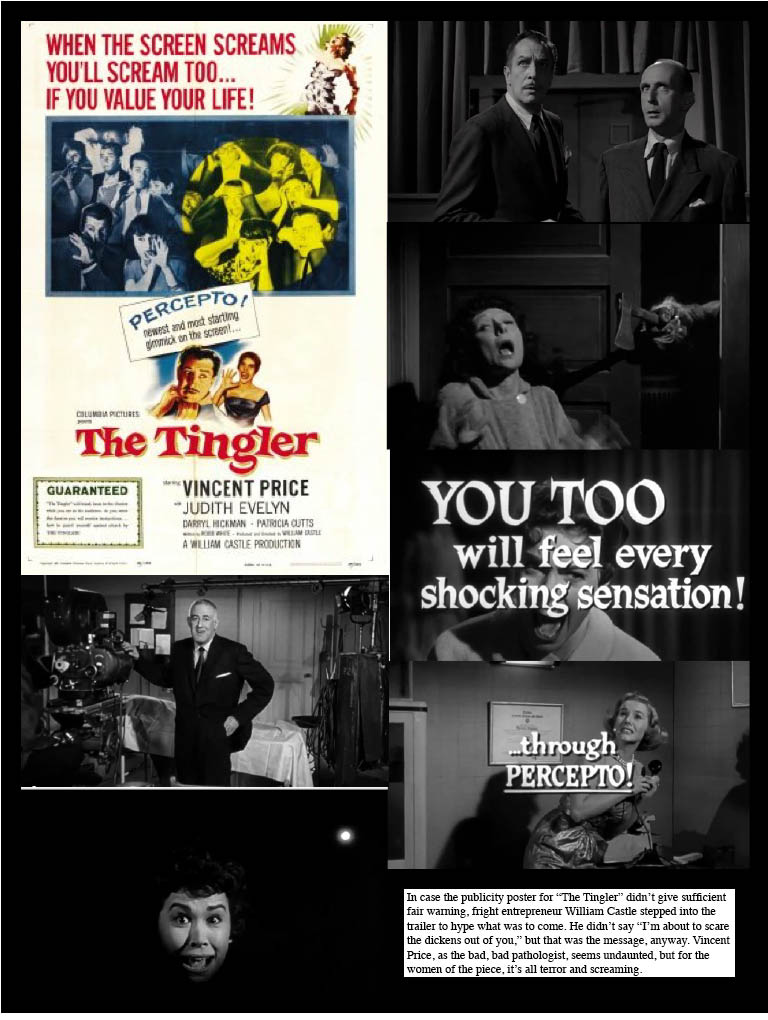 And – here comes the cause for the AMIA-L subscriber’s correction – many theater operators too, Castle’s recommendation that they rig seats with electric buzzers that would transmit electric shocks to the behind of audience members, who would then believe readily that the Tingler was coming to life, within them.
And – here comes the cause for the AMIA-L subscriber’s correction – many theater operators too, Castle’s recommendation that they rig seats with electric buzzers that would transmit electric shocks to the behind of audience members, who would then believe readily that the Tingler was coming to life, within them.
The film’s trailer touted this novel device. In it, Castle himself appeared not only to promise even “more shocks” than with his earlier House on Haunted Hill, but that tingling sensation in the posterior. Over snippets of preview, captions spelled out what was on tap: “You, too, will feel every shocking sensation!
“…through PERCEPTO.
“…Newest thrill-terror technique to hit the screen!
“GUARANTEE: THE TINGLER WILL BREAK LOOSE IN THE THEATRE WHILE YOU ARE IN THE AUDIENCE!” [caps, sic.]
But wait, interjected AMIA-L contributor Jack Theakston, a manager at the Rome Capitol Theatre in Utica, New York. “It’s really frustrating,” he wrote, “to see that the author of this article went out of his way to make sure the facts like 3D from the ’50s using Polaroid filters (rather than red/blue anaglyph) were correct, but then continues the old myth that The Tingler was shown with electrical shockers in the seats.” In fact, wrote Theakston, the devices in question “were actually bumper boxes to de-ice airplane wings that Castle bought military surplus. You got a rattling under your seat, not a shock.”
You may note in Castle’s trailer dialog that he gives the impression that the films shocks will complement the ones provided by Percepto, but doesn’t quite promise electric shocks, per se, when he proclaims “you will feel every shocking sensation.”
It may be, added another AMIA-L contributor, Casey L. Scott, that “the myth of the seat buzzers” persists because Joe Dante’s Matinee has John Goodman’s character, Lawrence Woolsey, a pronouncedly William Castle-like entertainment entrepreneur, does just that for “Mant!,” the oddball shocker he is about to unleash upon the movie world.
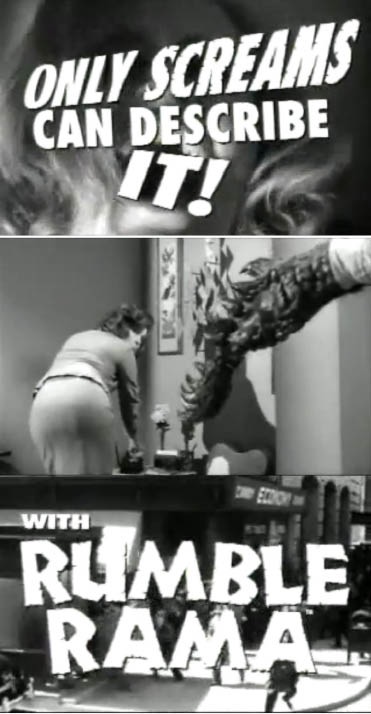
Netflix, by the way, is among the perpetuators of the seat-shocker error. Its thumbnail description says Castle “introduced The Tingler in theaters with electrically ‘enhanced’ seats that delivered a mild shock to audience members.”
Another AMIA-L contributor noted that Oatman-Stanford does not mention a book that is unlikely to turn up without a good deal of online and used-book store searching: a handy resource for theater owners that recommended publicity ruses well before the reign of Castle and other movie gimmickeurs of the 1950s. Bill Hendricks and Howard Waugh, in their The Encyclopedia of Exploitation: 10,001 Show-Selling Ideas, which they published with Showmen’s Trade Review in 1937, compiled many, many gimmicks they had used to bring attention to movies coming to a cinema they ran. “Fabulous, though it only has 1,000 ideas,” one commentator observed.
Still, Hunter Oatman-Stanford’s article is an impressive survey of the quirky methods that 1950s movie-house operators devised to make the cinema-going experience that little bit more engaging.
And you thought that the outer limits of matinee devilry was your rolling candy down the sloping floor beneath the seats, or flinging damp wads of tissue paper onto patrons from the balcony.
Insofar as archivists are collectors, Hunter Oatman-Stanford’s report on movie gimmicks is barely the tip of his iceberg of fascinating articles in Collectors Weekly. His articles have similarly dealt with the 1950s’ most nauseating jello-sodden comestibles; the demise of the eight-track; the nautical roots of today’s insufferably pervasive tattooing trend; the improvement of prostheses; what insane-asylum patients’ abandoned suitcases reveal about their lives; the history of wetsuits, men’s underwear, condoms, girl-scout cookies, and paper dolls; and “the attack of Mexican B movie ads” (yes, just the ads) and diablito pottery.
Not to mention, Oatman-Stanford’s history of the cuckoo clock, including ones topped with automated life-size flapping birds and unappetizing sculptured tableaux of foresters eating rats. Call those the B Cuckoo Clocks.
Previous Post: More from Wunderkino 2013 - Hunt'n n Fish'n
Next Post: ARCHIVE IN A WALL CAVITY

